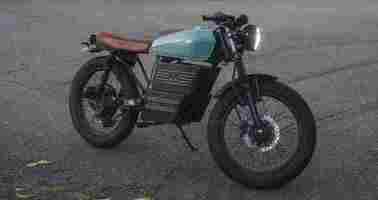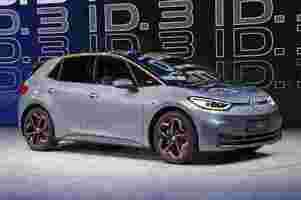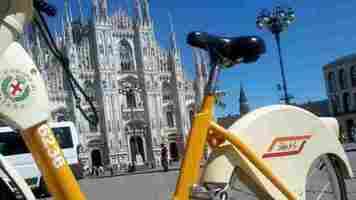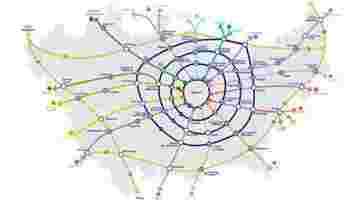This vintage electric motorcycle is actually… an ebike
Did you know SHIFT is taking the stage this fall ? Together with an amazing line-up of experts, we will explore the future of mobility during TNW Conference 2021. Secure your ticket now!

Perhaps you’re like me, and you’re a sucker for the vintage style of the 60s motorbikes, but at the same time you don’t want to buy an actual motorcycle. Because they’re big, scary, and expensive. Well, these are my thoughts at least.
In that case, you might want to check out the Beachman ’64 (as in 1964) which brings you the classic vibe, but is technically and legally an ebike.


Manufactured by Toronto-based startup Beachman, the retro two-wheeler is designed to echo the old-school cafe racers, while complying with the Canadian ebike regulations.
For that reason, its power and speed are limited to 500W and 32km/h. Its hub motor is throttle activated and the pedal drivetrain is separate from the motor, so… if you choose to pedal you won’t get any electrical assistance.
Range-wise the ebike is good for 90km, while its battery takes three hours to reach an 80% charge with a 120V fast charger.
The Beachman ’64 weighs 100kg, which brings it admittedly much closer to motorcycles than to ebikes. Also, unlike ebikes it has room for two and a maximum payload capacity of 159kg.
Other notable features include a full steel frame, motorcycle-grade shock absorbers, hydraulic disc brakes, an anti-theft alarm, LED lights, and a handlebar-mounted LCD screen displaying speed, charge level, voltage, and distance.
The ebike can be currently preordered by Canadian-based consumers via an Indiegogo campaign for $2,552, while retail price is at $3,299. A US rollout is planned for 2023.
All in all, the Beachman ’64 is neither the best, nor the most potent ebike out there. But is it the most stylishly retro one? And will you look utterly cool riding it? Yes, and yes.
Do EVs excite your electrons? Do ebikes get your wheels spinning? Do self-driving cars get you all charged up?
Then you need the weekly SHIFT newsletter in your life. Click here to sign up.
Affordable EVs will be the catalyst for a decade long shift to electric cars
According to a recent report from American industry analysts ABI Research, 2021 will be the year that electric vehicles hit the mainstream in a big way, Roadshow by CNET says .

The main driver behind this will be a slew of more affordable EVs — like the VW ID.3, ID.4, and Ford Mustang Mach-E — coming to market.
“This transition from niche to mainstream will be built on the introduction of low-cost EV models that satisfy the typical mileage requirements at an acceptable price point,” said James Hodgson, Smart Mobility & Automotive Principal Analyst at ABI Research.
According to the report, by the end of this decade, EVs will make up a quarter of all new vehicles shipped.


In some markets, like the UK and Norway, which are banning the sale of new petrol and diesel vehicles, we can expect that number to be higher. Drivers simply won’t have the choice to buy anything other than an EV if they want a new car.
Some people said that 2020 would be the year of the EV , but y’know there was a pandemic induced economic downturn which put a dampener on things.
Indeed, ABI’s research suggests we won’t see the booming car sales of the past decade returning for at least five more years as the world recovers from the economic downturn.
So 2021 might not be a breakout year in its own right, but should be considered a potential inflection point: the start of significant change that will gather pace and continue over the next 10 years.
Sales of EVs around the world are certainly going in the right direction, and many might believe that EVs are already a common site on roads. However, as Roadshow points out, Tesla delivered just shy of 500,000 vehicles globally, last year. To put that into context, Americans bought over 3 million pickup trucks across the same time period.
Indeed, EVs still have a way to go before they are the “mainstream” motorist’s vehicle of choice.
However, with sales steadily increasing over the past year, ICE bans coming into force soon, and with mainstream manufacturers like VW launching its range of “people’s EVs,” the coming years are certainly laying the foundation for the future of electric motoring.
Sources: Body Shop Business
SHIFT is brought to you by Polestar. It’s time to accelerate the shift to sustainable mobility. That is why Polestar combines electric driving with cutting-edge design and thrilling performance. Find out how .
Milan to create 750-kilometer network of cycle paths
This article was originally published by Christopher Carey on Cities Today , the leading news platform on urban mobility and innovation, reaching an international audience of city leaders. For the latest updates, follow Cities Today on Twitter , Facebook , LinkedIn , Instagram , and YouTube , or sign up for Cities Today News.

Milan is set to create 750 kilometers of dedicated cycle paths by 2035 as part of plans to cut pollution and boost sustainable travel.
The Cambio plan — adopted in November last year by the Italian city’s Metropolitan Council — is set to launch this summer, with a budget of €250 million (US$282 million).
The web of cycle paths — which consist of four ring roads, four greenways, and 16 radiating lines — will connect the city core to its suburbs and surrounding municipalities.
When completed, the network will exceed the 680 kilometers of cycle paths planned by Paris — currently one of Europe’s largest bicycle infrastructure projects.
“Over the next few years we will invest around €250 million to create a capillary network of cycle paths that will integrate with the other existing modes of travel,” said Milan Metropolitan Council’s Delegate Councillor for Mobility, Beatrice Uguccioni.
“The aim is to bridge the gap — this will lead to less emissions and traffic, but also more road safety, as cyclists and motorists will not have to share the same road space.


Reaching from Milan’s city centre into the surrounding countryside, the ambition is to make cycling the first and easiest choice for getting around the Metropolitan City of Milan — an area that includes both the city and its suburbs.
The city wants cycling to become the primary mode of transport for at least 20 percent of its residents by 2035, and will seek to ensure that 80 percent of homes are within one kilometer of a fully protected cycle route.
“This is a unique project in Italy, because it is the first to be accompanied by an organic strategic document,” added Uguccioni.
“Our will is to surround the metropolitan city with a capillary network of cycle paths that connect the capital city with the entire metropolitan area, replicating what we have already done with optical fibre.”
The paths will also feature state-of-the-art infrastructure, including low-impact motion-sensor lighting, digital displays, and a network of fibre optic cables, as well as dedicated bike parking stations.
During the pandemic, Milan reallocated 35 kilometers of city centre road space for cycle lanes, created new and widened pavements, designated streets as a priority for pedestrians and cyclists and imposed a speed limit of 30 kilometers per hour.